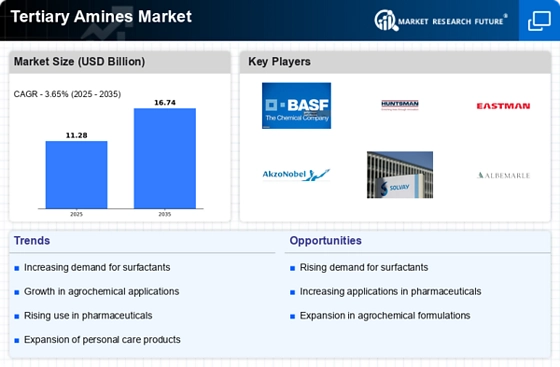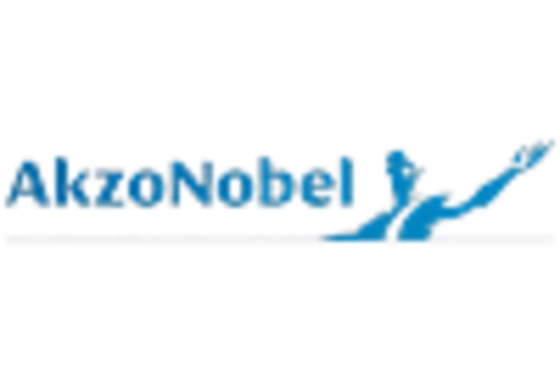Rising Demand in Agrochemicals
The Tertiary Amines Market is experiencing a notable increase in demand due to the growing agrochemical sector. Tertiary amines serve as essential intermediates in the production of herbicides, fungicides, and insecticides. As agricultural practices evolve, the need for effective crop protection solutions intensifies. Reports indicate that the agrochemical market is projected to reach USD 300 billion by 2025, which could significantly bolster the demand for tertiary amines. This trend suggests that manufacturers in the Tertiary Amines Market may need to adapt their production strategies to meet the rising requirements of agrochemical formulations, thereby enhancing their market presence.
Surge in Personal Care Products
The Tertiary Amines Market is witnessing a surge in demand driven by the personal care and cosmetics sector. Tertiary amines are utilized as surfactants and emulsifiers in various personal care formulations, including shampoos, conditioners, and skin care products. The Tertiary Amines is anticipated to exceed USD 500 billion by 2025, indicating a robust growth trajectory. This growth is likely to create new opportunities for manufacturers of tertiary amines, as they seek to innovate and develop products that align with consumer preferences for quality and sustainability. Consequently, the Tertiary Amines Market may experience a shift towards more specialized formulations to cater to this expanding market.
Growth in Pharmaceutical Applications
The Tertiary Amines Market is poised for growth due to the increasing utilization of tertiary amines in pharmaceutical applications. These compounds are integral in the synthesis of various active pharmaceutical ingredients (APIs) and serve as intermediates in drug formulation. The pharmaceutical market is projected to reach USD 1.5 trillion by 2025, which could lead to heightened demand for tertiary amines. This trend indicates that companies within the Tertiary Amines Market may need to enhance their production capabilities and invest in research and development to meet the evolving needs of the pharmaceutical sector, thereby positioning themselves favorably in a competitive landscape.
Technological Innovations in Production
The Tertiary Amines Market is benefiting from technological innovations that enhance production efficiency and reduce costs. Advances in manufacturing processes, such as continuous flow chemistry and green chemistry techniques, are enabling companies to produce tertiary amines more sustainably and economically. These innovations are likely to improve the overall quality of the products while minimizing waste and energy consumption. As the Tertiary Amines Market adapts to these technological advancements, it may witness a transformation in production methodologies, leading to increased competitiveness and the ability to meet diverse customer demands more effectively.
Environmental Regulations and Compliance
The Tertiary Amines Market is increasingly influenced by stringent environmental regulations aimed at reducing harmful emissions and promoting sustainable practices. Regulatory bodies are imposing guidelines that necessitate the use of eco-friendly chemicals in various applications, including industrial processes and consumer products. This shift towards sustainability is likely to drive innovation within the Tertiary Amines Market, as manufacturers seek to develop greener alternatives that comply with these regulations. The potential for growth in this area suggests that companies may invest in research to create tertiary amines that are not only effective but also environmentally benign, thereby enhancing their market appeal.

















Leave a Comment